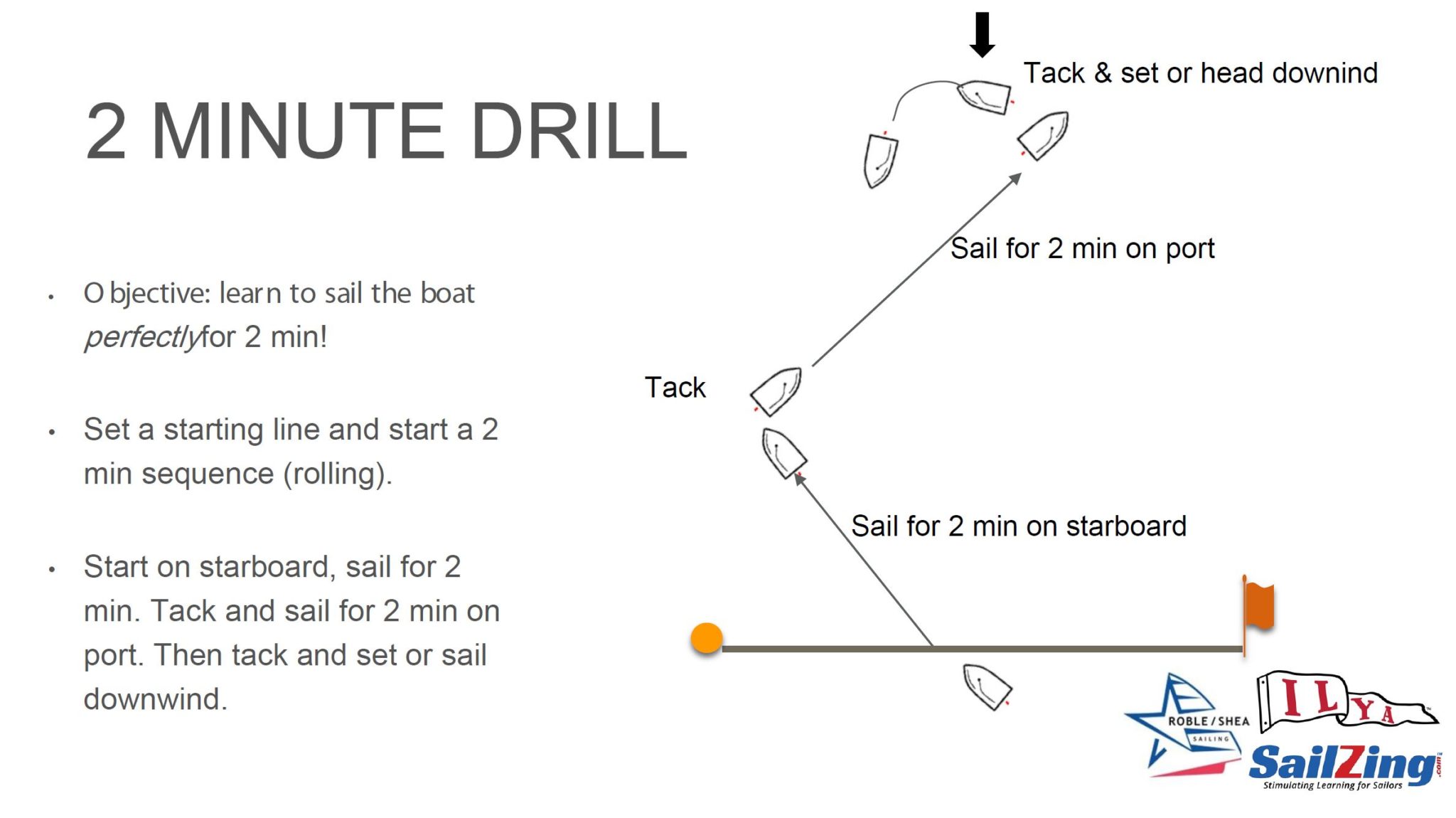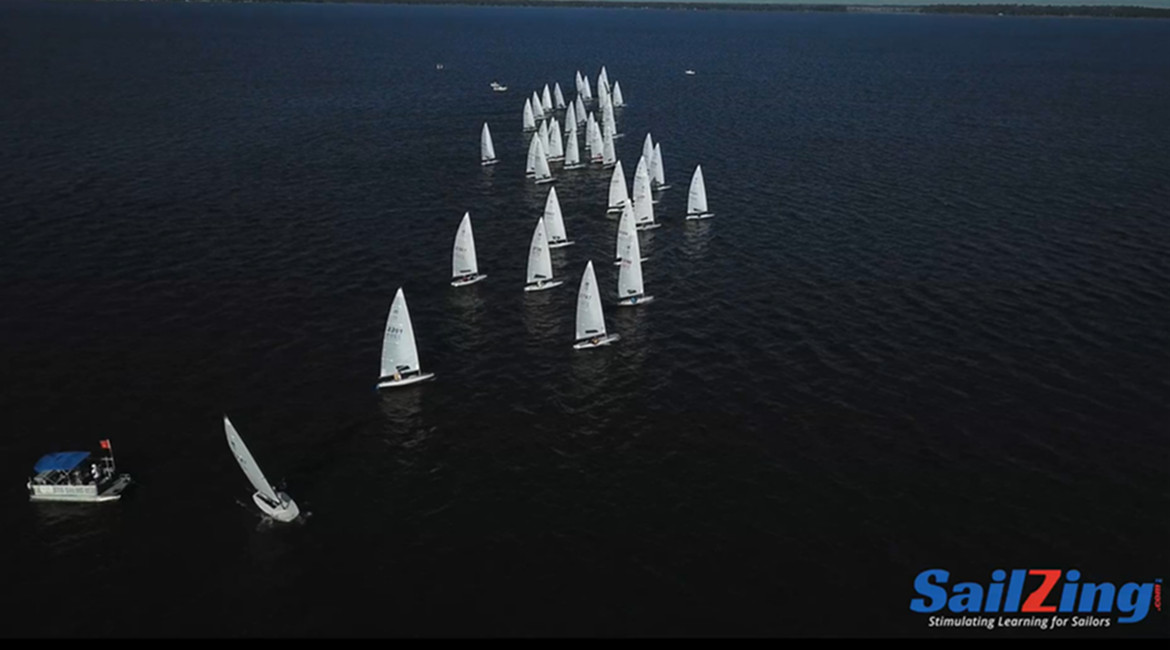After a decent front row start, what’s the next priority? Answer: holding your lane and going fast, so you can break out of the pack and have strategic choices. For tips on lane management after the start, we turned to Roble / Shea Sailing and the International Sailing Academy (ISA).
The video from Roble / Shea Sailing highlights the importance of getting set up for speed before the start and then concentrating on nothing else but speed for the first few minutes after the gun. The ISA video gives specific tips on holding a lane. Watch the videos and/or read the combined summary below.
Roble / Shea Sailing – Lane Management after the Start
International Sailing Academy – How to Hold Your Lane in a Laser
Key Points
Prepare for speed before the start
- Practice coming off line with speed before the starting sequence.
- Set up the boat for the conditions. You want slightly more power when coming off the line so you can be fully hiked. Also, the snow fence effect will diminish the oncoming wind as it approaches the line.
- Ease vang and cunningham slightly
- Mark main and jib sheets for their optimal position
- Board – fully down unless very overpowered
- Pre-position body weight: sitting low, mid boat, or hiking, depending on conditions.
- Eliminate distractions. Take care of everything else before the start: weeds, free lines, dry cockpit, loose objects, etc.
Determine if your position is sustainable
Regardless of how well you sail, you won’t be able to hold a lane in bad air, which could be either of the following situations:
Unsustainable conditions:
- In a leeward boat’s backwind zone: leeward boat is bow out and less than one boat length to leeward
- In a windward boats’ wind shadow: windward boat’s mast is ahead of your bow and less than several boat lengths to windward.
If your position is not sustainable, you have to decide whether to bail out or keep going without a clear lane.
Sail in High Mode
Unless you’re really slow, the most frequent lane problem is boats to leeward. The closer a boat is to leeward, the more you need to think about sailing in high point mode. The ISA video covers tips for high mode.
- Set up for more power, as discussed above.
- Hike harder and sooner in puffs than the boat below.
- Maintain perfect, constant angle of heel. Besides the speed advantage, ISA points out that maintaining a constant angle of heel helps avoid steering mistakes.
- Steer accurately and actively.
- Use your telltales.
- React precisely to every wave and puff.
- Avoid steering errors. These are often the culprit.
- Don’t bear away immediately in a lull. Let the boat coast forward as you ease the sails and the controls.
- Don’t slow the boat by pinching too much in a wave or puff. Otherwise, you’ll have to bear off when you are slow, losing more distance to windward.
- Avoid dragging the rudder by steering down hard, especially when slow. A slow boat with extra drag slips quickly to leeward.
- Keep more sheet tension, but stay active. Mainsheet tension is key to pointing. ISA says you need at least equal tension to the boat below. However, be sure to ease in puffs if overpowered, and in lulls to maintain flow.
Focus on your boat, not the boat below
ISA’s video warns us about the “tractor beam” sucking us into the boat below, with a clip from “Dumb and Dumber.” Focus on optimizing your sailing and don’t get distracted by the boat to leeward.
The Two-Minute Drill
Roble / Shea frequently do a two-minute drill with at least one other boat. The boats try to hit the line with speed within a few boat lengths of each other and sail for two minutes on starboard tack, then two minutes on port. They then head back down and repeat the drill.

This drill teaches sailors to concentrate fully during the part of the race where speed is most important. Even though wind shifts are not part of this drill, the sailor’s position after four minutes will drive home the importance of lane management after the start.
Upwind Strategy and Tactics – Sail in Clear Air
Sail Trim and Changing Gears
SailZing Upwind Sail Trim Series
Bad Start? Four Recovery Options


